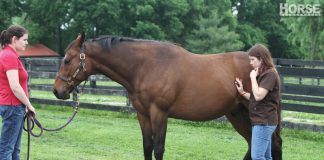
Living pasture grasses and alfalfa are rich in fat and water-soluble vitamins, essential fatty acids, minerals, carbohydrates, and protein. But once they are cut, dried, and stored as hay, many nutrients that were once plentiful begin to dwindle.
Water soluble vitamins. Vitamin C is the known as “the most unstable vitamin” and will quickly oxidize. B vitamins take longer to diminish, but over time their levels will taper off. Fortunately, a healthy liver is capable of producing vitamin C, and the hindgut microbial flora can synthesize the B vitamins.
Essential fatty acids (EFAs). Two fatty acids, linoleic acid (LA) and alpha-linolenic acid (ALA) are plentiful in fresh grasses and alfalfa. Hay, on the other hand, loses these EFAs as storage time progresses. Since by definition, essential nutrients must be in the diet, it is imperative that a source of LA and ALA be supplemented. Adding a feed source that has higher amounts of ALA than LA will better match what originally exists in living forages. Unfortunately, most commercial feeds are high in soybean oil, providing more LA than ALA, significantly increasing inflammation. Adding ground flaxseeds or chia seeds will help bring the ALA to LA ratio back into balance.
Protein and minerals tend to remain at similar levels as pasture. Water soluble carbohydrates (simple sugars and fructans) and starch, however, will decline after cutting because there is still some enzymatic metabolism of carbohydrates in hay until there is not enough moisture to support it.
In summary, horses who mostly rely on hay as their predominant forage source require supplementation to fill in nutritional gaps. Keep this in mind during the colder seasons when pasture is not as nutritious or plentiful.





